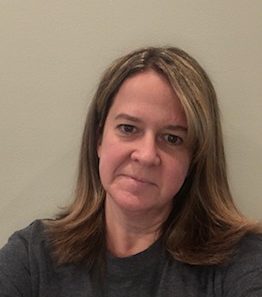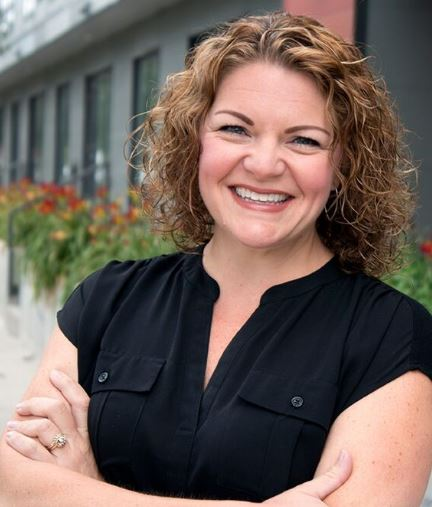Editor’s note: This issue’s Conversation features an interview with Karen Goodenough, PhD. Karen has been executive director of the National Association of Social Workers, Minnesota chapter since 2018. She received her BSW from St. Olaf College, MSW from Augsburg University, and PhD in social work from the University of Minnesota. Previously, Dr. Goodenough worked in direct practice and nonprofit program management, and has been a consultant in evaluation, data utilization, and strategic planning. She has also served as adjunct faculty in numerous BSW and MSW programs throughout Minnesota. Dr. Goodenough is a member of the Minnesota Board of Social Work Advisory Committee and Legislation and Rules Committee, cochairs the NASW Licensure Task Force, and was on the Document Writing Team for the Social Work Interstate Compact.
The interview discusses the recent release of data revealing the pass rates of the ASWB exam, related issues of bias and access, and opportunities for a way forward as a profession.
Amy Skeen: Hi, Karen, and thanks for joining the Conversation. As you are aware, the Association of Social Work Boards (ASWB) released data on licensing exam pass rates for the first time during the summer of 2022. As a result, questions were heightened related to the equity of the exam and how this impacts access to licensing. Your background and research in this area can provide an important framework. Could you start by talking about your role related to licensing issues, and why this topic is relevant to our field?
Karen Goodenough: This is an area of great importance for our field, and has been a significant focus of mine throughout my career. I have served as the executive director of the Minnesota chapter of NASW for five years. Aligning my academic and professional interests, my dissertation focused on the county exemption from social work licensure in Minnesota. I am cochair of the NASW licensure taskforce and was on the document team, the group that wrote the social work interstate compact. The final compact legislation was announced on February 27, 2023, and is now ready for state enactment. Information on the Compact can be found at swcompact.org.
The issue of licensing and regulation is of utmost importance, as it allows social workers to compete in the marketplace. Social workers fought hard for licensure in order to protect the profession as well as the public. However, we take for granted that the current structures and requirements of licensure are necessary and are meeting these goals.
AS: Based on your roles as both a social worker and as a researcher, what significant findings or concerns were revealed from the data?
KG: For decades, NASW and others in the field advocated for the release of this data. There have been long-standing concerns related to social justice, issues of gatekeeping and recognizing that certain groups were being left out of the profession—and, connected to this, that marginalized populations were not getting access to social work services.
The ASWB data released for the first time this summer confirmed what we knew anecdotally, that there are significant disparities in pass rates among racial groups. For example, the report showed White test-takers were twice as likely as Black test-takers to pass the exam on the first attempt. There are also significantly lower passage rates for those who don’t speak English as their primary language, and for those over the age of 50.
What is also concerning is how the data was presented. It is very difficult to draw larger conclusions, and the data is presented in segments to make it look as though the results are not that bad. It is imperative that the ASWB release the full data set and allow independent researchers to complete further analysis and reporting to ensure we understand the whole picture.
AS: Based on the data, what are some of the key questions that need to be examined?
KG: There are multiple questions that need to be more closely examined, starting with issues of bias and validity in the exams themselves. The ASWB is not taking ownership of any problems within the exams, and instead is pointing fingers at schools and universities and at “systemic issues,” as well as at the test-takers themselves. In social work we call this blaming the victim, and it’s not okay. The general sentiment in the report is that most test-takers eventually pass, which does not acknowledge the harm that the exams do mentally, financially, or as a barrier to the profession for trained social workers ready to enter the profession.
First and foremost, however, we need to be asking whether the exams are, in fact, necessary at all. There is no data indicating that those who pass the exams are more prepared to practice, are more ethical, or have better client outcomes than those who do not pass. In fact, in light of exemptions and blanketing-in/grandfathering provisions, there are thousands of social workers practicing across the country who have never passed an exam—and no indication that they are doing harm or are any less skilled than their colleagues who have passed exams.
AS: Can you share an example from your own community, and talk about the solutions that were explored?
KG: In Minnesota several years ago, we had a significant influx of Hmong refugees, and not enough Hmong-speaking practitioners to meet their needs, as the exams were proving to be a barrier to obtaining licensure. This prompted us to explore alternate pathways to licensure for Hmong practitioners. Our state developed a provisional licensure option for all trained social workers who speak English as a second language and are foreign born who have failed an ASWB exam once. Rather than having to take the exam multiple times, they are able to apply for provisional licensure and receive supervised practice hours, which, once complete, allow them to hold a regular license. There is no indication that these practitioners are any less skilled or ethical than those who have passed the exams in our state.
AS: How can that experience help inform the current situation related to licensing and exams?
KG: As a profession, we have multiple opportunities before us. This includes defining more clearly the requirements that determine readiness for practice as social workers. It also means better understanding the exams as they currently exist—including how the content is developed and by whom, and the relationship between the ASWB exams and the CSWE competency-based curriculum of social work education programs, which is designed so that students demonstrate competency as a requirement for graduation. And it includes exploring alternative pathways to licensure.
AS: What is the ASWB stance on the inequities of the data? Are changes being made?
KG: It has been extremely frustrating to listen to the ASWB present this data and their next steps. They are doubling down on their contention that there is nothing wrong with the exams, that we should trust that they are valid and reliable, and that others are to blame for the inequities. They will be offering test prep support for those who have failed—but speak about that failure being the fault of test-takers for not sufficiently studying in the first place, or for their schools in not preparing them adequately. They are also cutting the number of response options from four to three for each question, but only because they have confirmed that this will not actually help or hurt the results for test-takers. These changes are not adequate.
In addition, the ASWB is starting new test development initiatives. I believe we should be very wary of trusting the ASWB, which has a significant financial stake in the test game and failed to report this data for decades, or to develop other assessment options for our field.
AS: How do the disparities in passing rates in the ASWB exam relate to data from licensing exams of other professions? Are these fields also raising concerns, or is this unique to our field?
KG: These problems are definitely not unique to our field, or to the problems inherent in standardized tests more generally. While college entrance exams and fields such as law and teaching are considering changes to exam requirements, the discussions and alternate pathways are really only beginning. I believe this is a time when the social work profession, driven by our code of ethics, can be an example for how to rethink competency assessment.
AS: Some argue for reforming the exam and others advocate for eliminating it all together. When thinking about having a process of examination and licensing, what have you found as the key pros and cons?
KG: This is the conversation we are having every day, the conversation that needs to be held. We, social workers, were the ones that advocated for licensure, to protect the profession and to protect the public. Licensure and regulation are important, and we’ve worked to ensure our requirements are similar to those of other fields, to ensure social workers can compete in the marketplace. Yet this does not mean there are not issues with what once made sense—it’s time to evaluate what should or can happen moving forward. Some states have begun eliminating exam requirements at the nonclinical levels in our field, establishing a social work degree from an accredited program as the baseline proof of competence required to enter the profession. This option is opening the door to oversight and ongoing regulation by state licensing boards, growing the regulated workforce and providing protection of the public. Seems like a win to me, and one we’ll be able to assess as years go on.
AS: What is the path forward?
KG: Social workers and our field can serve as leaders—this is what we do. Our profession is guided by ethical standards to promote equity and social justice. This includes working to eliminate racism and other systemic barriers, starting within our own profession. We also have an opportunity to better align as a profession: unifying statutes across the country to ensure telehealth and interstate practice are accessible for social workers and clients, ensuring that the professional associations and the regulatory bodies are in sync, and developing practice and regulation that meets current and future needs rather than being stuck in the past.

